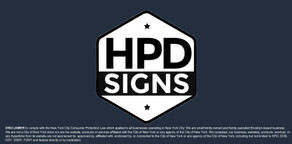- Home
- ** FREE DOWNLOADS FDNY **
- Carbon Monoxide Detection Requirements NYC / HPD : 1 RCNY 908-01 (pdf file)
hpdsigns.nyc
Carbon Monoxide Detection Requirements NYC / HPD : 1 RCNY 908-01 (pdf file)
- SKU:
- UPC:
- MPN:
- Carbon Monoxide Detection Requirement
Description
Understanding NYC Carbon Monoxide Detection Requirements: 1 RCNY 908-01
New York City has stringent regulations to ensure the safety of its residents and building occupants from the dangers of carbon monoxide (CO). One of the key regulations is 1 RCNY 908-01, which outlines the requirements for carbon monoxide detection in various types of buildings. This law aims to enhance public safety by ensuring that CO detectors are installed and maintained correctly.
Overview of 1 RCNY 908-01
1 RCNY 908-01 specifies the requirements for the installation, maintenance, and inspection of carbon monoxide detectors in residential and commercial buildings. The rule is part of the New York City Building Code and is enforced by the Department of Buildings (DOB).
Key Provisions
-
Scope and Applicability:
- The regulation applies to all buildings where people sleep, work, or gather, including residential buildings, schools, and commercial spaces.
- Specific emphasis is placed on buildings with fuel-burning appliances, fireplaces, or attached garages, as these are common sources of carbon monoxide.
-
Installation Requirements:
- Residential Buildings: CO detectors must be installed in the vicinity of bedrooms and sleeping areas to ensure occupants can hear alarms even while asleep.
- Commercial Buildings: Detectors must be installed in areas where fuel-burning appliances are present and in common areas where people congregate.
- Mixed-Use Buildings: Both residential and commercial parts of the building must comply with their respective requirements.
-
Types of Detectors:
- CO detectors can be battery-operated, hardwired with battery backup, or interconnected systems that provide comprehensive coverage.
- Detectors must meet the standards set by the Underwriters Laboratories (UL) or an equivalent testing agency.
-
Placement of Detectors:
- Detectors should be placed at a height where CO is likely to accumulate, typically on ceilings or high on walls.
- In multi-story buildings, detectors must be installed on every floor, including basements and attics if they contain fuel-burning appliances.
Maintenance and Inspection
-
Regular Maintenance:
- Property owners are responsible for ensuring that CO detectors are operational at all times. This includes replacing batteries and testing detectors regularly.
- Maintenance schedules should follow the manufacturer’s recommendations and best practices outlined by the DOB.
-
Annual Inspections:
- Buildings must undergo annual inspections to verify that all CO detectors are functioning correctly.
- Inspections should be documented, and records must be kept available for review by city officials.
-
Tenant Education:
- Property owners must educate tenants about the importance of CO detectors and provide instructions on what to do if a CO alarm sounds.
- Tenants should be informed about the dangers of carbon monoxide and how to recognize the symptoms of CO poisoning.
Compliance and Penalties
1 RCNY 908-01 includes provisions for penalties in case of non-compliance. Property owners who fail to install, maintain, or inspect CO detectors as required by the law may face significant fines. Additionally, non-compliance can result in violations that must be addressed promptly to avoid further legal action.
The Importance of Carbon Monoxide Detection
Carbon monoxide is a silent killer, often referred to as the "invisible enemy" because it is colorless, odorless, and tasteless. CO is produced by the incomplete combustion of fossil fuels, which can occur in heating systems, stoves, and vehicles. Prolonged exposure to CO can lead to serious health issues and even death. Symptoms of CO poisoning include headaches, dizziness, weakness, nausea, confusion, and loss of consciousness.
By adhering to the requirements of 1 RCNY 908-01, property owners can significantly reduce the risk of CO poisoning. Properly installed and maintained CO detectors provide early warning, allowing occupants to evacuate and seek help before CO levels become dangerous.
Conclusion
1 RCNY 908-01 is a critical regulation for ensuring the safety of New York City's residents and building occupants. By mandating the installation and maintenance of carbon monoxide detectors, the law aims to protect people from the potentially deadly effects of CO exposure. Property owners must comply with these requirements to create a safer environment and avoid penalties. Through diligent adherence to these regulations, New York City continues to prioritize the health and safety of its community.
DISCLAIMER these codes may not be the most recent version. The State / federal or other regulation department may have more current or accurate information. We make no warranties or guarantees about the accuracy, completeness, or adequacy of the information contained on this site or the information linked to on the state site. Please check official sources. The requirements for detector are determined by intended use and by applicable regulation. The BUYER is responsible for determining the appropriate detector needed. WE make no warranty or representation of suitability of a detector to any code or for any specific application. IT IS THE CUSTOMER'S RESPONSIBILITY TO ENSURE THAT THE DETECTORS THE CUSTOMER ORDERS ARE IN COMPLIANCE WITH ALL STATE, FEDERAL, LOCAL, AND MUNICIPAL LAWS. Please review terms and conditions prior to purchase. For more information about what is required, see the laws that are referenced and the rules applicable to your city and state. This page is for informational purposes only and is not intended as legal advice, professional advice or a statement of law. You may wish to consult with an attorney.
Related Products
Related Products

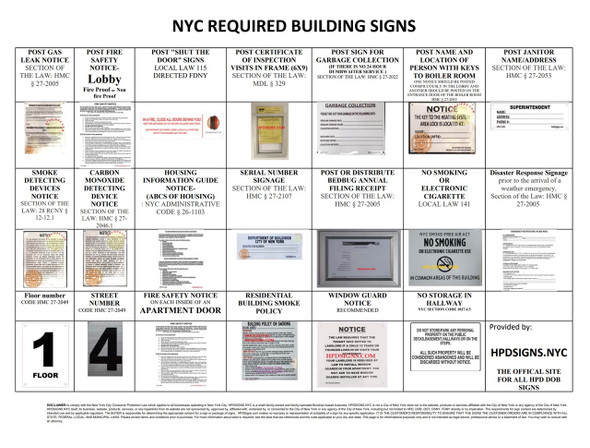
HPD NYC REQUIRED SIGNS CHECKLIST ( pdf format)
hpdsigns.nyc
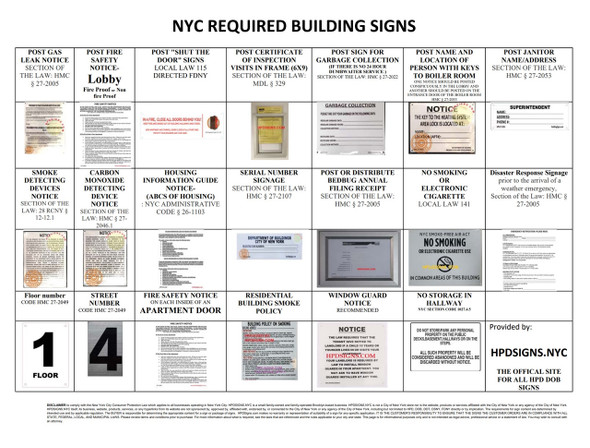

NYC HPD Required Signs checklist ( pdf format)
hpdsigns.nyc

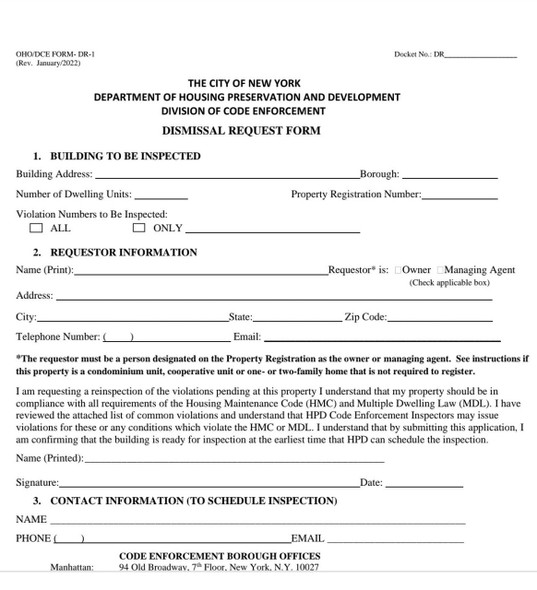
Dismissal request form hpd nyc (pdf file)
hpdsigns.nyc
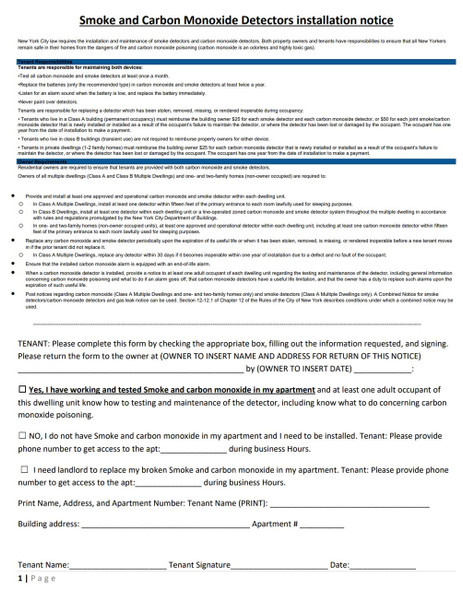
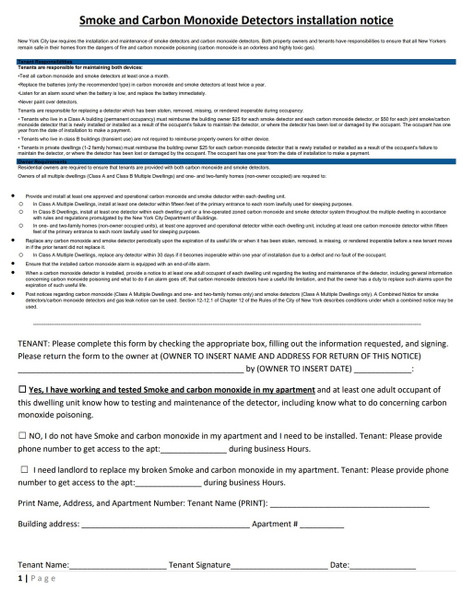
Carbon monoxide detector installation notice (pdf file)
hpdsigns.nyc
